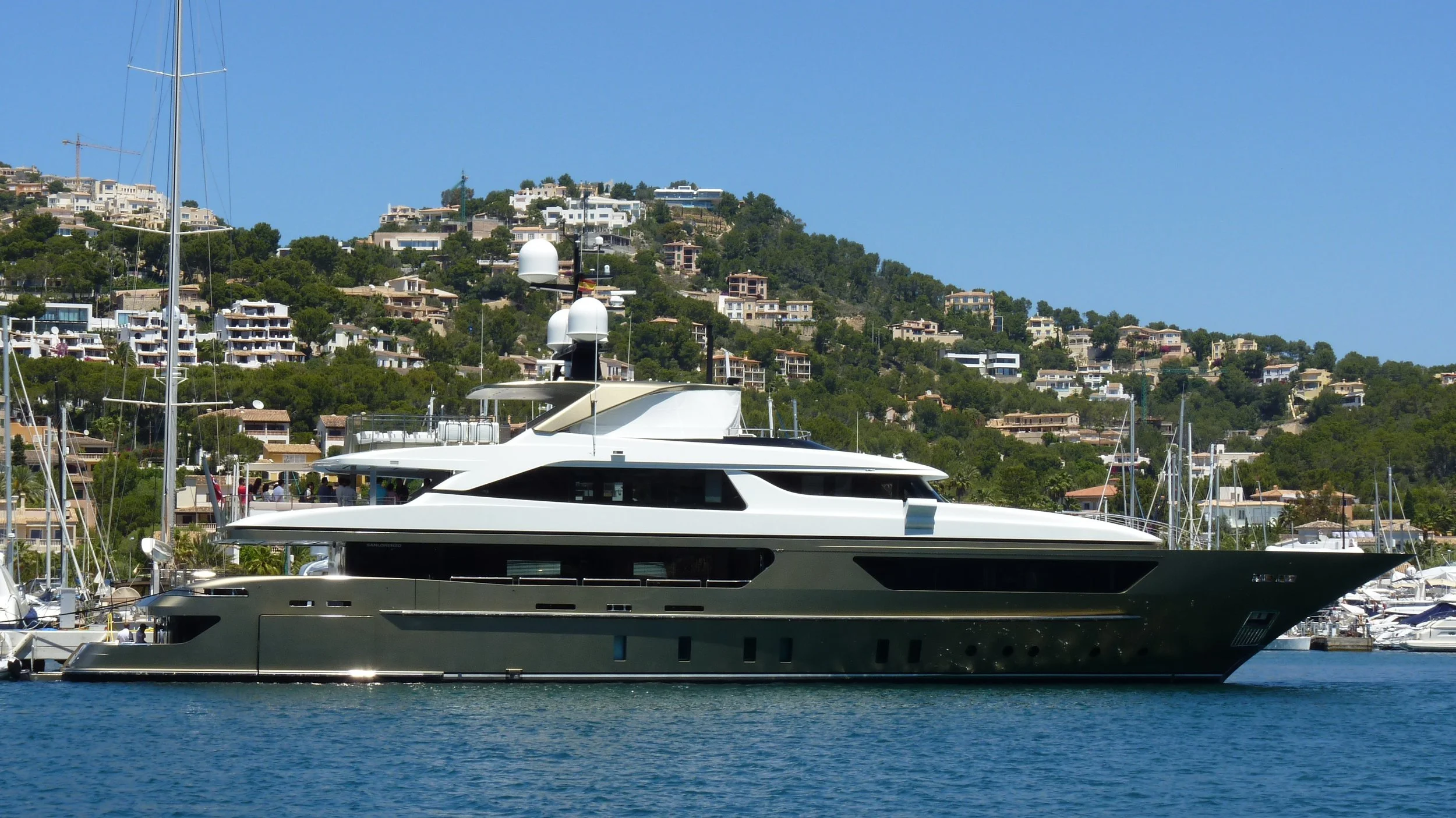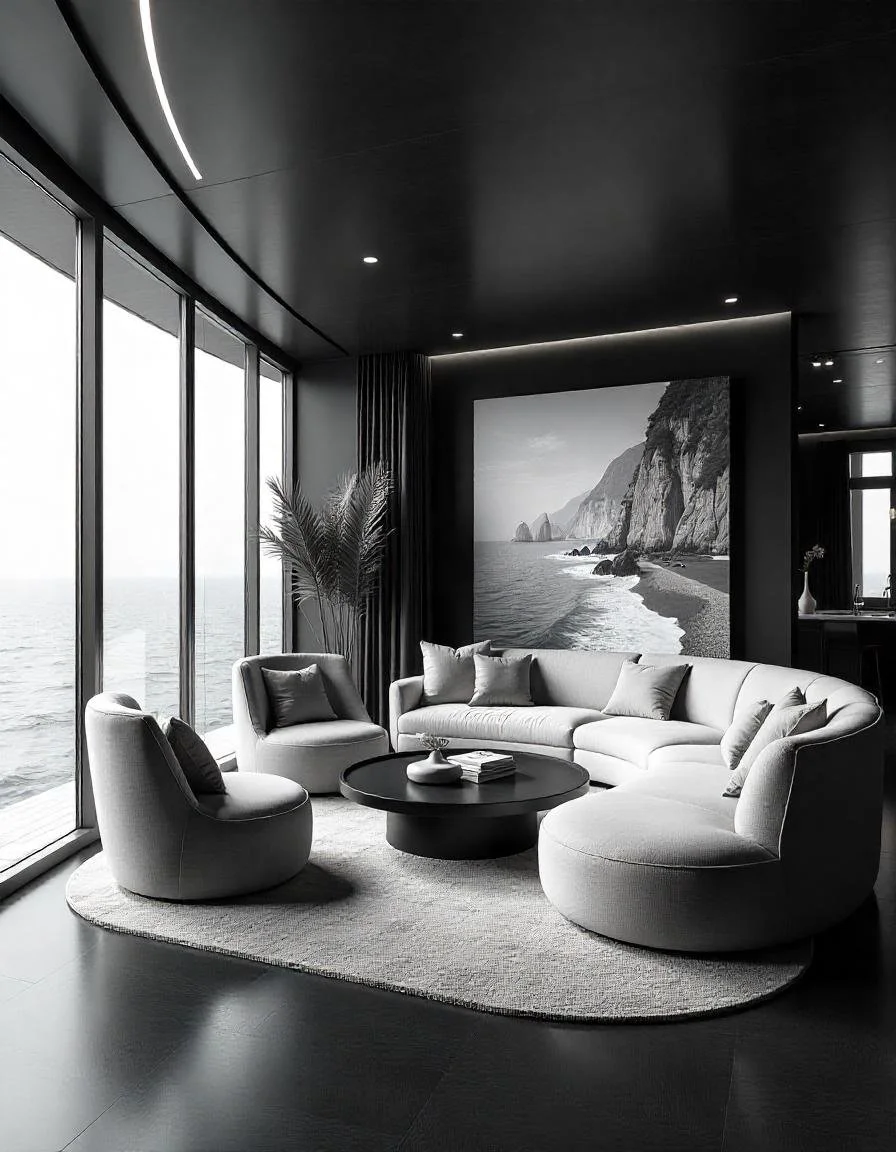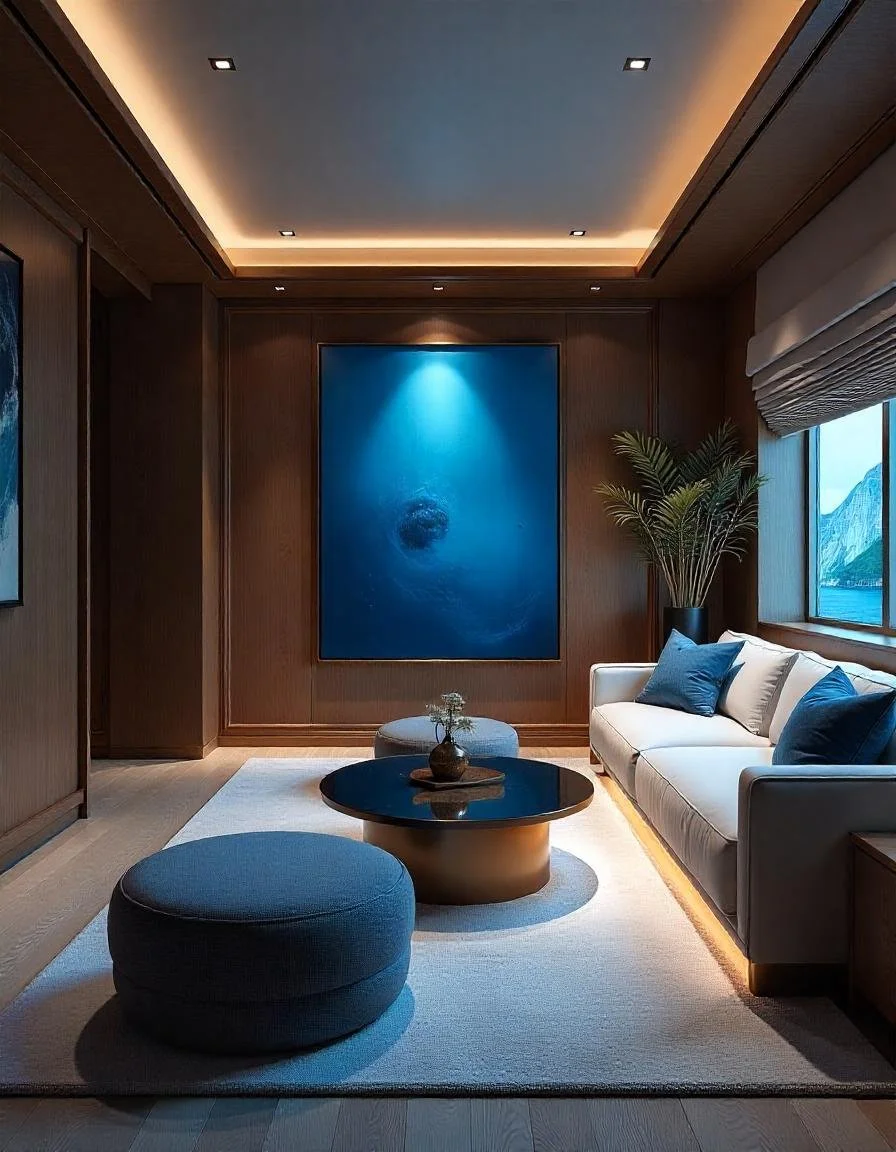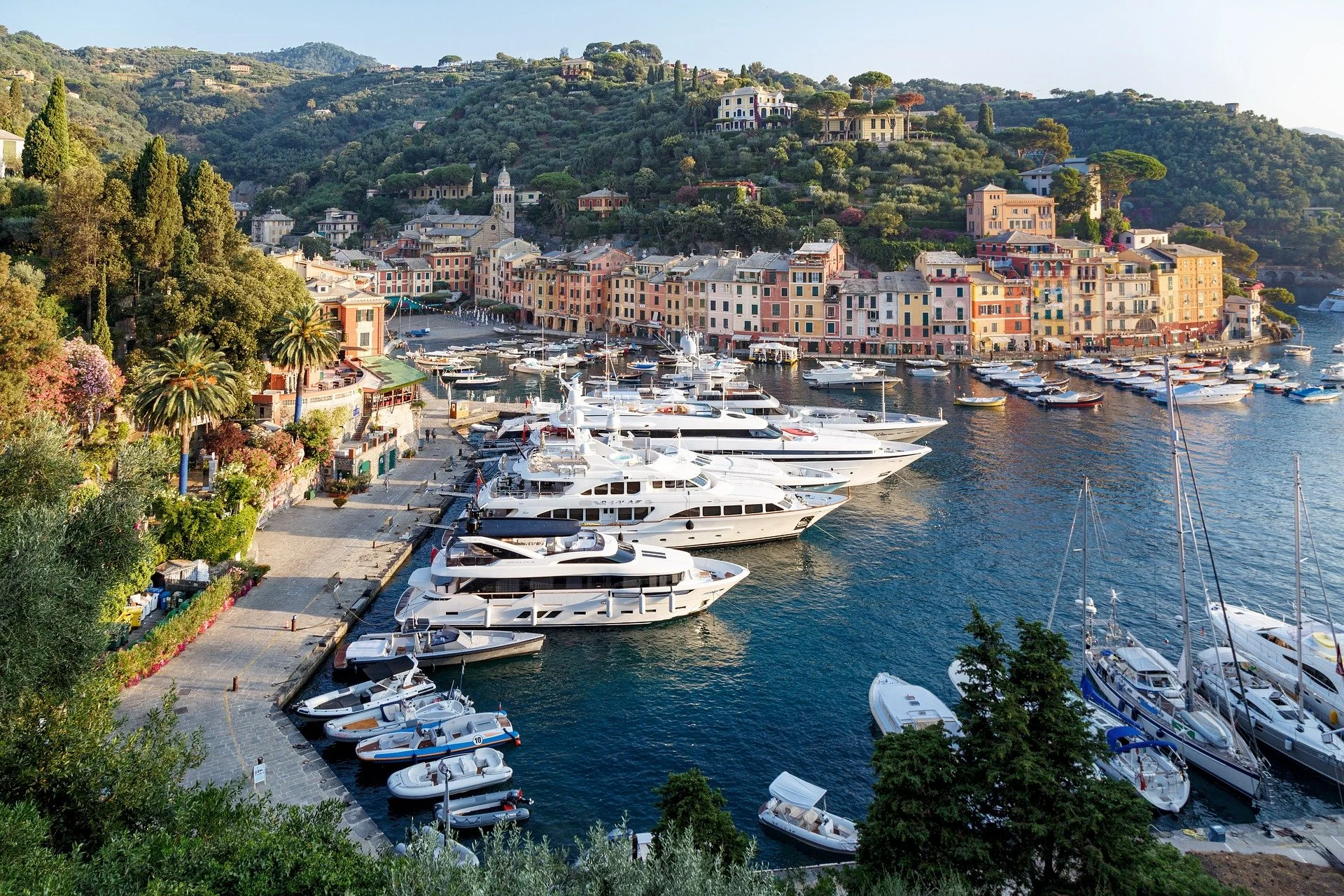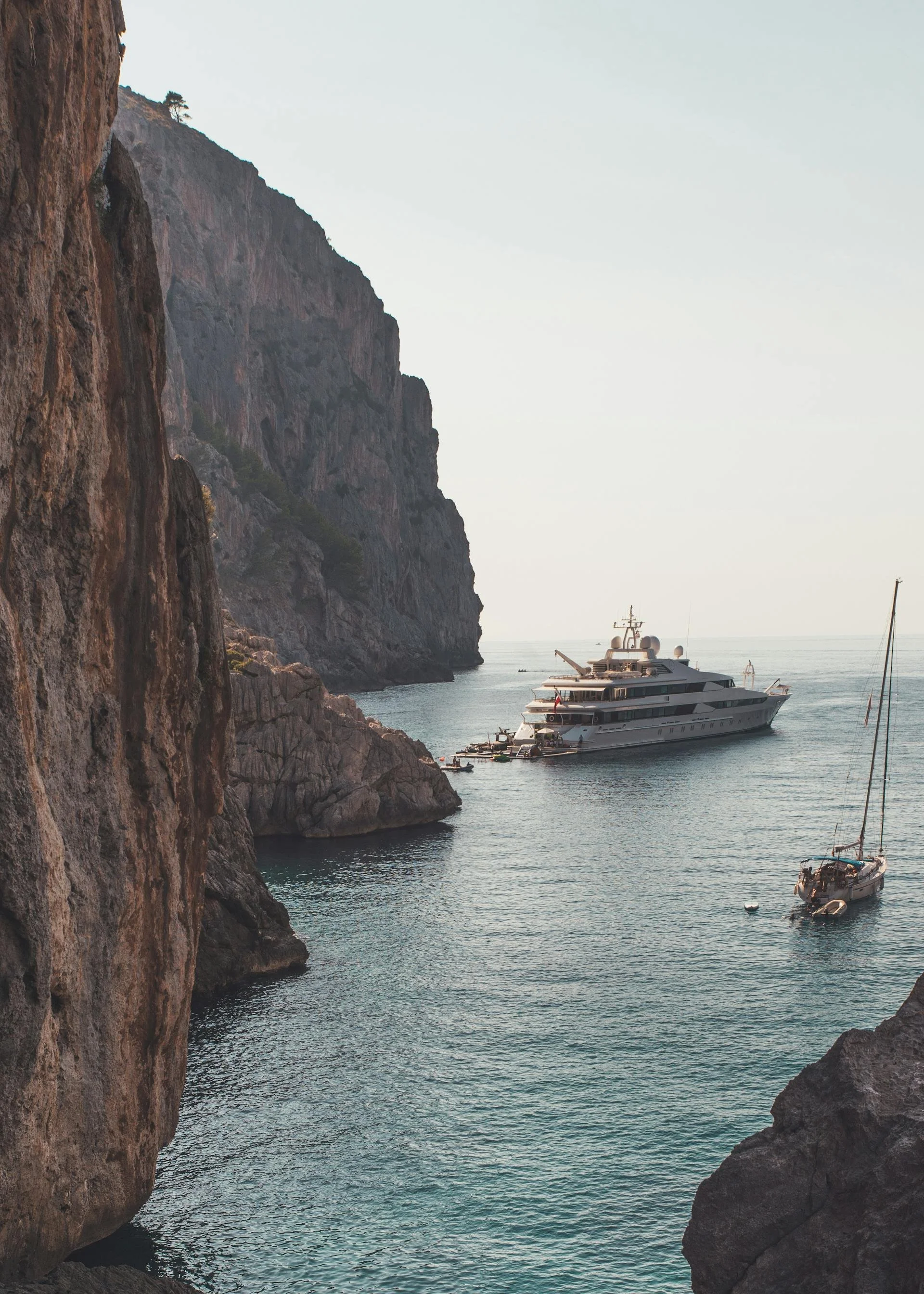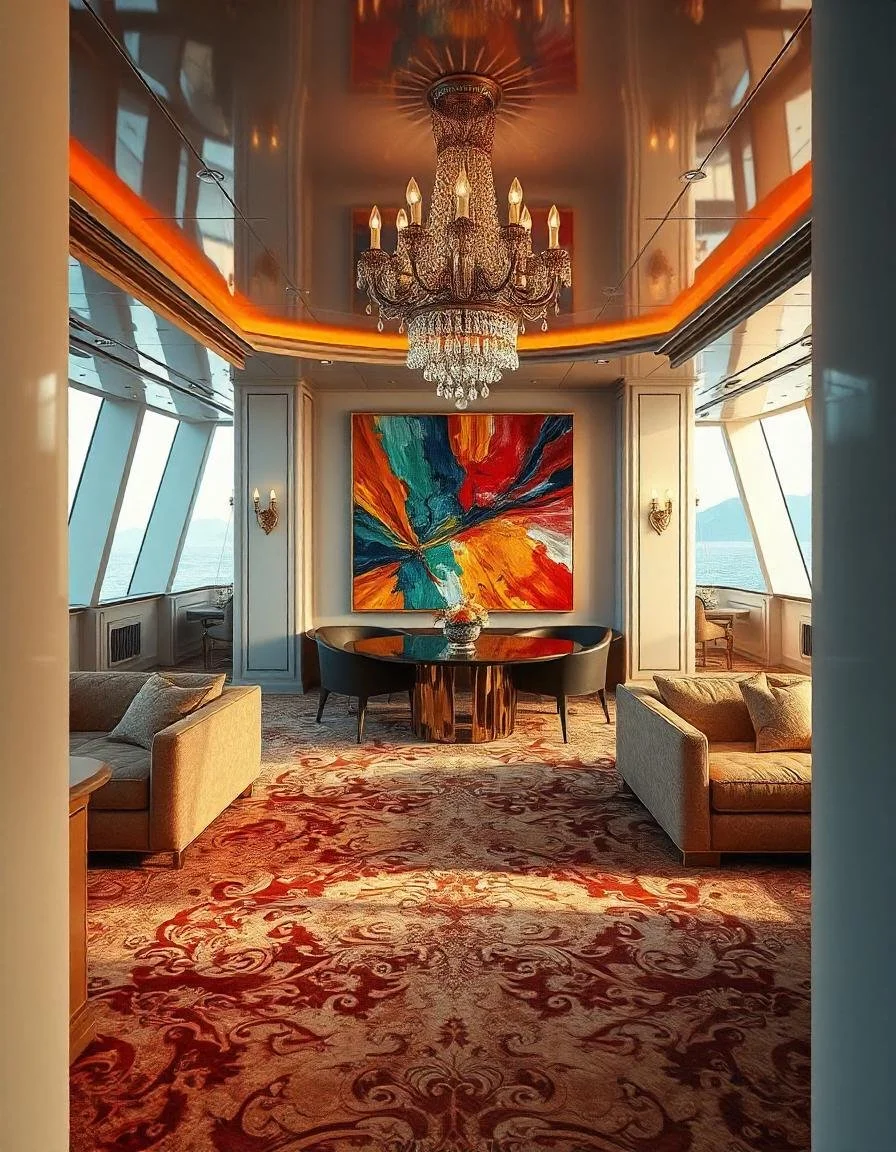Luxury Yacht Art Consulting: Bespoke Art Solutions
Custom Art Solutions for Exclusive Maritime Interiors
Luxury yachts have evolved far beyond simple vessels for travel—they are architectural marvels floating on water, seamlessly blending interior yacht design with cutting-edge innovation. These yachts showcase some of the world’s most refined design and bespoke art, becoming unique environments where functionality meets aesthetic brilliance. For art collectors, yacht owners, and designers, art curation aboard a superyacht presents both a challenge and an opportunity to enhance and transform these vessels into exclusive, floating galleries.
In this article, we’ll explore the unique considerations, challenges, and tailored artworks involved in yacht art consulting, emphasizing the synergy between custom art and interior yacht design. From environmental protection to trends in maritime art fabrication, we'll also delve into security measures, structural factors, and design choices that define this specialized field.
The Unique Appeal of Tailored Artworks on the High Seas
Art aboard a luxury yacht is more than decoration—it’s a defining aspect of the yacht’s personality and ambiance. This setting provides the perfect opportunity to showcase rare, one-of-a-kind pieces that reflect both the tastes of the owner and the serene allure of life at sea. Curating art for a yacht blends aesthetics with the principles of yacht interior design, where elements like fluctuating light, moisture, and movement are constant. The beauty of this arrangement lies in its dynamic, as natural light changes throughout the day, creating an ever-evolving experience of the art collection.
Owners often want their yachts to reflect a personal aesthetic and elevate the space to an “architectural wonderment floating” on the water. This alignment with yacht interior design ensures each art piece is chosen with versatility in mind, able to withstand changing conditions without compromising its beauty. This calls for careful art consulting to determine how each piece “slots in” with the yacht’s unique features and integrates with its multi-faceted design, allowing each bespoke art piece to thrive in both stillness and motion.
Sourcing and Commissioning Custom Art for Yachts
A yacht’s art collection is a powerful reflection of the owner’s tastes and values, and art consultants often source from artists worldwide to bring diversity and distinctiveness to these collections. Many consultants work with artists across continents, commissioning custom pieces tailored to fit the yacht’s interior layout, aesthetic vision, and environmental needs. Sourcing art for yachts from various regions allows owners to enjoy a multicultural and richly textured collection, each piece telling a unique story of its origin.
These curated collections go beyond traditional themes, incorporating contemporary and even experimental art that responds well to marine life and setting. From textural works that echo the waves outside to sculptures inspired by aquatic forms, each piece is selected to resonate with the sea.
Environmental Challenges: Protecting Art in Maritime Conditions
Superyachts present a set of environmental challenges for fine art that requires more than just aesthetic consideration; they demand technical expertise to ensure long-term preservation. The marine environment is constantly shifting, making elements like humidity, temperature, and vibration important factors in selecting and maintaining bespoke art aboard a yacht. These challenges are a significant focus in yacht interior design, where integrating climate control and preservation systems is crucial.
Humidity and Temperature Control: The constant fluctuations in temperature and humidity create cycles of expansion and contraction in the materials of the artwork, from the canvas to the pigments. Marine-focused businesses and art consultants work to install stabilizing systems that maintain the yacht’s interior climate at a museum-standard 20°C ± 1°C. This consistent climate, an essential feature of yacht interior design, helps prevent the gradual deterioration of artwork, a process that can result in “yellowing” or “darkening” of certain pigments over time.
Lighting Solutions for Art: Light is another important factor, as natural light can be particularly intense at sea. Art consultants analyze both directional and ambient light sources on board, evaluating how changing light conditions affect the artwork throughout the day. LED lighting, designed to protect and enhance art, can highlight certain pigments while avoiding UV exposure that may lead to fading. Anti-reflective, museum-quality glass and UV filters are often incorporated to protect paintings and ensure visibility in various light conditions, allowing owners to enjoy “a nice bit of sun in the morning” without the risk of damage.
Structural Integrity and Vibration Control: Yacht construction involves numerous vibrating elements, from engines to generators, and these vibrations can impact the longevity of fine art. Yacht designers, naval architects, and engineers work closely to minimize onboard vibrations and identify areas that are least affected by these forces. Displaying art in locations away from heavy equipment, like the sun deck or engine room, is crucial. An art consultant with expertise in both yacht engineering and fine art can guarantee that each piece is placed in a location that won't be weakened over time by vibrations.
Security Measures: Protecting Valuable Art at Sea
Art collections aboard luxury yachts can be of immense value, sometimes worth more than the vessel itself. This necessitates advanced security systems to safeguard these prized assets. Security planning is a vital aspect of art consulting for yachts, with options that range from full-circuit CCTV and wireless protection systems to custom close-protection services.
In addition, specialized marine art insurance is often required to cover the unique risks of transporting and housing valuable art in a maritime environment. Yacht owners can opt for bespoke insurance policies that take into account the location, climate, and value of their art collections, ensuring that all eventualities are covered.
Technical Challenges: Framing, Installation, and Placement
Each yacht poses unique challenges for art installation. Art consultants collaborate with yacht designers and engineers to design custom framing solutions, which must often be anti-reflective and museum-quality to withstand the marine environment. Custom framing protects against salt, humidity, and fluctuating temperatures, while also ensuring the art is securely fastened to prevent movement during high seas.
Specialized Framing and Mounting: Standard art framing isn’t sufficient for yachts, as these frames are not designed to endure constant motion and humidity changes. Using marine-safe adhesives, such as “museum glue,” helps keep art stable without risking damage to the piece. The frames are crafted to protect the artwork against vibrations and to fit seamlessly into the yacht’s interior without sacrificing style.
Strategic Art Placement: Placement is carefully selected to enhance visibility while protecting from direct airflow or temperature extremes. Fresh air blowers, warm air floods, and direct sunlight can all accelerate art degradation. For instance, sudden temperature shifts may negatively impact pieces near open sundeck doors or air conditioning vents. Art consultants therefore choose locations with stable airflows and minimal temperature fluctuations.
Accommodating Yacht Movements: Yacht movements, including pitch and roll, impact both art display and preservation. Art consultants familiar with marine environments work to place art in areas least affected by motion. For high-value pieces, this means securing them in areas with optimal stability and minimal sway.
Transforming Yachts into Floating Art Galleries
A well-curated art collection turns a yacht into a floating gallery, giving each room a unique atmosphere that feels both intimate and luxurious. Art aboard a yacht must be deliberately designed to adapt to different contexts. By placing textural works and sculptures in high-traffic areas, consultants can create spaces that feel as dynamic as the seascape outside. Art on yachts is chosen not just for its beauty but for its ability to resonate with the marine environment, resulting in an experience of luxury that’s harmonious with the natural world.
Art as an Extension of Architecture: The integration of art and architecture on a yacht enhances the visual and functional cohesion of the vessel. Contextualism plays a key role, as artwork should complement the architectural style and design language of the yacht. Textural works that reflect the ebb and flow of the sea, for instance, allow the art to act as an extension of the boat’s aesthetic.
Art as a Personal Sanctuary: Owners often seek custom art that provides a sense of sanctuary, where each piece invites calm and reflection. The art pieces on yachts are intentionally chosen to inspire a sense of exclusivity and peace, ensuring that the yacht becomes a true retreat.
Future Trends: Sustainable and Custom Art Solutions
The world of yacht art consulting is continually evolving, with a focus on sustainability and innovative custom solutions. Many yacht owners are looking to commission pieces made from sustainable materials that reflect an eco-conscious lifestyle. Art consultants work with artists who specialize in using recycled materials, ocean-themed motifs, and biodegradable products that harmonize with the marine environment.
The demand for personalized and eco-friendly art is rising, and consultants are meeting this need by sourcing pieces that reflect both the owner’s values and the global shift toward sustainability.
Logistics of Transporting and Installing Art Aboard Yachts
Transporting high-value art to a yacht often requires specialized art logistics and shipping professionals. Moving valuable artwork across oceans presents unique challenges, including customs requirements, marine-specific insurance, and climate-controlled transportation to preserve the integrity of each piece. In many cases, a yacht’s art collection may include sculptures, installations, and large-scale paintings that require custom packing, crating, and loading methods. This intricate process ensures that each item arrives in pristine condition, ready to be displayed.
Customs, Taxes, and Maritime Shipping Regulations: Art transportation involves complex customs procedures, especially when moving across international waters or docking at multiple ports. Importing art can lead to custom-related tax implications, which vary by country. For yacht owners with frequent global itineraries, art consultants and logistics experts work to facilitate the necessary permits, minimize import taxes, and ensure all documentation is in place for seamless movement.
Specialized Art Insurance: Traditional insurance policies may fall short in covering the specific needs of high-value art collections at sea. Given the challenges of marine environments and international waters, yacht owners often invest in specialist art insurance, covering against potential losses during transportation, installation, or environmental damage aboard the yacht. These policies are highly customized to suit both the value of the art and the conditions aboard the vessel.
Precision Installation: Installing art aboard yachts requires technical expertise to securely fasten pieces against shifting and movement. Consultants and installers employ marine-rated hardware and anti-vibration mounts, ensuring that pieces remain stable even during high seas. This attention to detail is essential for protecting both the art and the yacht's interior surfaces from potential damage.
Long-Term Preservation Techniques for Onboard Art Collections
After installation, preserving the artwork is an ongoing priority. Art consultants develop tailored maintenance protocols that take into account the unique environmental challenges of yachts. From controlled lighting systems to advanced climate control, long-term preservation helps maintain the artwork’s value, aesthetic, and structural integrity.
Scheduled Maintenance and Inspections: Yacht owners often establish regular maintenance schedules with art preservation experts. These inspections involve monitoring humidity, temperature, and light exposure, as well as ensuring the stability of mounting systems. Scheduled check-ups also detect signs of early wear, like pigment fading or material expansion, so that preservation techniques can be adjusted accordingly.
Flexible Art Placement: As the yacht changes locations and routes, certain pieces may need to be relocated to protect them from heightened exposure to natural elements, including the effects of UV rays in sunnier regions or increased humidity in tropical climates. Art consultants may reposition pieces based on the yacht’s current climate or reconfigure displays to suit a particular season or region. This flexibility keeps the art looking fresh and well-preserved while enhancing the yacht’s ambiance year-round.
The Future of Yacht Art Consulting: Trends and Innovations
The world of yacht art consulting is an evolving field that responds to changing tastes, technological advancements, and the growing importance of sustainability in luxury markets. Custom art fabrication and consulting for yachts increasingly incorporate eco-friendly practices, sourcing sustainable materials, and supporting artists who emphasize environmental themes. These efforts allow art collectors to display pieces that not only reflect their personal aesthetic but also contribute to the global movement toward environmental consciousness.
Emphasis on Digital Art and Interactive Experiences: The rise of digital art and projection-based installations has opened up new avenues for art aboard yachts. Digital displays allow for a curated, ever-evolving collection where owners can change artwork at the touch of a button, transforming a space for a specific event or mood. This flexibility is perfect for the maritime setting, where immersive experiences can enhance the fluidity of the ocean environment.
Sustainability and Ethical Art Choices: Many yacht owners and designers are increasingly aware of the environmental impact of traditional art materials and transport methods. From sourcing reclaimed materials to supporting artists who promote sustainability, these eco-conscious choices add another layer to the yacht’s story and ethos. Art consultants play a crucial role in connecting owners with artists who prioritize ethical sourcing and sustainable practices, ensuring that each piece aligns with the owner’s values.
Curating for Social Spaces and Private Retreats: Art consulting on yachts is increasingly focused on enhancing both communal areas and private quarters. Curated art collections elevate social spaces, such as lounges, dining areas, and sundecks, while private quarters benefit from personalized, intimate works that create a sanctuary-like atmosphere. Custom art that reflects the owner’s personal experiences or favorite destinations can be commissioned to offer a sense of nostalgia and warmth in private spaces, providing a retreat from the demands of travel.
Yachts as Second Homes: A Personal, Not Performative, Space
The modern yacht owner increasingly views their vessel as a second home—a space that must feel comfortable and personalized, a reflection of their yacht interior design preferences, rather than being ostentatious or conventional. Just as in a land-based residence, yacht owners desire spaces that reflect their journey, passions, and memories. They seek meaningful décor that resonates on a personal level, which drives them to invest in custom artwork and rare, handcrafted pieces that add depth without being overly lavish or grandiose.
Many yacht owners don’t wish to adopt yacht interior design choices that might be seen as “show-off” statements; instead, they look for art that tells their story, contains subtle luxury, and evokes a sense of “sanctuary” and retreat. It’s about creating a home on the water, not a stage.
Curating with Purpose: Rather than splurging on well-known pieces to impress, these owners look for art that speaks to them personally. For example, they may commission a piece from an emerging artist or a craftsman whose work resonates with their individual taste, favoring unique textures, custom palettes, and pieces that feel like part of their personal history. This deliberate choice creates a narrative, blending personal meaning and comfort rather than the traditional impulse to display wealth.
Creating a Sense of Calm: Many owners are drawn to artwork that evokes a sense of calm and softness—a critical element for a yacht designed to be a personal escape. Rather than overwhelming grandeur, subtlety, and sophistication take precedence, with art installations and decor carefully chosen to provide a consistent feeling of peace and relaxation.
The Art of Contextualism: Custom yacht art consultants use “contextualism” to align design choices with the unique environment and movement of a yacht. Yachts are constantly changing locations, offering dynamic views and experiencing shifts in natural light throughout the day. Artwork can be deliberately chosen and positioned to interact with these elements, allowing each piece to look distinctive from different vantage points and times of day. This creates a continually refreshing experience that’s almost like “living with art” in an entirely new way. It allows the owners to feel like they’re in an entirely different space, even if the yacht’s interior remains the same.
A Blend of Utility and Aesthetic: While custom art might appear to be a purely aesthetic choice, its placement on a yacht requires practical considerations, from humidity and vibration controls to protective framing. In these second-home environments, art must withstand unique maritime conditions and enhance both functionality and beauty, reinforcing the concept of luxury as comfortable and livable.
Distinctiveness without Flash: A Singular Style at Sea
For these discerning yacht owners, art isn’t about display or social currency; it’s about creating a genuinely distinct environment where they can relax and find peace. Often, they don’t want a yacht that looks like every other high-end vessel in the marina. This motivation leads them to work with custom art consultants who understand the importance of creating something original—an artistic experience that is deeply reflective of the owner’s tastes, values, and desire for individuality.
Luxury yacht interiors have evolved to reflect an ethos of understated elegance and personalization rather than opulence. Each yacht’s art collection may contain elements that are deeply meaningful or significant only to the owner. Some pieces might recall favorite places they’ve traveled, highlight artists from cultures that have influenced them, or reflect the unique marine environment itself. Art turns into a personal story that doesn't require external validation or explanation.
This level of distinction goes hand-in-hand with high-quality, one-of-a-kind artwork, which may be sourced from different continents, each piece carrying a unique story and cultural influence. This approach often brings together global art traditions, blending various cultural elements into a cohesive yet eclectic style. It’s an exploration of both art and world history, chosen specifically for the owner’s enjoyment and personal connection.
Why Custom Art is Essential for the Personal Touch
Luxury yacht owners, who value art as an extension of themselves rather than a social marker, often work with consultants who can transform their yachts into floating “galleries of the self.” Custom art consulting aligns seamlessly with yacht interior design, providing opportunities to commission pieces tailored to their tastes, experiences, and vision, bringing a personal quality to a setting typically defined by uniform luxury.
This custom approach allows owners to explore varied textures, themes, and artistic movements in ways that truly speak to them. Aboard these yachts, art integrates into the broader yacht interior design vision, creating a uniquely personal, art-filled environment that honors the owner’s desire for distinctiveness without pretense. It is a space designed not for external admiration but to feel lived-in, comfortable, and intimate.
In essence, the trend of decorating yachts as second homes focuses on both authenticity and artistry. Art reflects personal stories, ensuring each yacht becomes a floating retreat—a sanctuary filled with meaning, memory, and a singular style.
Conclusion
Luxury yacht art consulting is a sophisticated field that merges the aesthetics of fine art with the practical demands of life at sea. By focusing on each yacht’s unique characteristics and the owner’s personal vision, consultants help create spaces that resonate with depth, individuality, and comfort. These floating sanctuaries become more than just vessels—they are living, dynamic environments filled with memory, artistry, and personal expression. As yacht owners continue to view their vessels as second homes, the role of custom art consulting will only grow in importance, helping transform yachts into personalized works of art that inspire and comfort in equal measure.
